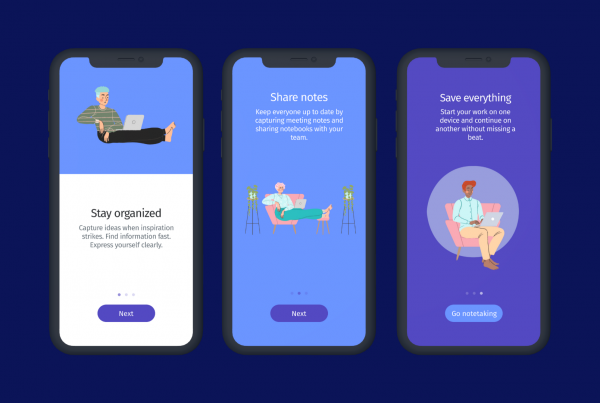Article updated on May 13, 2020.
Users prefer learning from their mistakes than reading product documentation
Technology companies throw over-featured interfaces and complex interactions at us on a daily basis and expect to solve the issue with 1000-word documentation.
There’s an award-winning paper called Life Is Too Short to RTFM: How Users Relate to Documentation and Excess Features in Consumer Products. It was written by Alethea L Blackler, Rafael Gomez, Vesna Popovic, and M Helen Thompson. The paper addresses two common issues that users of various products and interfaces find: over-featured interfaces and product documentation.
They conducted a series of surveys to 170 people over 7 years and a 6-month study based on diaries and interviews with 15 participants. They discovered that not only most users do not read manuals, but also do not use all the features of products they use regularly.
According to the studies, only 25% of the time people read the manuals. Another interesting fact is that men are more likely to read the documentation and use all features than women. Also, younger and more educated people are less likely to read the manual at all!
Manuals are difficult to use

The research found that even when people did read manuals, they become frustrated and often found them ineffective. Most users believed that it was unclear to find information as the structure and layout made it difficult to use and navigate.
They found that most manuals have incorrect assumptions about what users need and that the terminology was confusing and inconsistent. Besides, the information was irrelevant and not enough to actually help users.
Users are impatient

We are becoming more and more impatient. Users prefer to explore on their own and learn from mistakes rather than reading a series of steps on a page. The study says that most people skip ahead and go straight to using an application or product without reading the manual.
“People try things out, think them through and try to relate what they already know to what is going on” – Rettig, 1991
Humans acquire understanding through real actions in the world. So for us, it only makes sense to read manuals when we are really stuck or if the product/software itself does not meet our expectations. Besides, we read documentation to take action immediately, so we’ll forget the information right away.
Availability of manuals

The studies found that most of the time, manuals are not available or difficult to access when users really need it.
1.Offline
When you purchase an electronic device they usually come with printed manuals or “Quick Start” flyers. But these manuals aren’t available on the go.
Imagine you just bought a digital camera and you have an issue during a photoshoot. You will have to rely on different sources to solve the issue on the spot. There’s no way you will grab your car keys and get the manual that you left in your office drawer.
In workplaces, manuals for office equipment are rarely made available to everyone that needs to use it. Also, during employee training, you receive a handful of documentation regarding the company itself (processes, systems, you name it). But when you’re really having doubts, the most resourceful information will be from experienced co-workers.
- Online
As software companies keep introducing features, it becomes difficult to understand how to accomplish a task. Users get distracted by overly complicated interfaces, design elements, and colors. According to the study, feature bloat slows the user’s learning and adoption process.
“The amount of effort needed to learn a feature is not commensurate with its utility”
In the online world, the most common product documentation example is the FAQ page. Recently we wrote an article about FAQs and explained that the main problem is its ineffective format. When users are dealing with an issue, they have to stop what they are doing at that precise moment. And move to a different page. And you know how hard it is to follow instructions while changing tabs? You probably do.
Also, online manuals and FAQ pages are extremely long. Which makes it very difficult to find information. Besides, that page is just a list of possible questions and answers in random order. On which you have to hope that it will answer all the details of your issue. And even if you need information regarding a small detail, you have to send a request to the support team so they can add it to the list or reply.
The solution is in simplifying

The key result of these studies is that life is too short to read manuals. Simplifying is a product documentation best practice that you should follow. There’s a need to simplify products and applications. And rethink the features that really introduce value and solve the user’s needs. And, more importantly, provide real-time support that is fast, easy to use, and resourceful.
“the provision of help and assistance needs a more flexible, responsive and 21st-century solution than the traditional manual. It seems users have already decided that the manual is old hat. We need to catch up.”
Let’s take Millennials for example. Although we have been using technology from an early age, we still struggle with new interfaces. And how we deal with issues is rarely through reading documentation and FAQs. We go straight to exploring the software and learn while using it.
If we have an issue, first we look for a Chatbot or interactive assistant on the company’s website. Then, we look for 2-min video tutorials on Youtube. If that doesn’t work, we do reach for the FAQs. But end up scrolling the page to read only the bullet points. And if it still isn’t enough to solve the issue, personally, I go for Twitter messages. Because email might take hours and calling isn’t even an option anymore.

With tools like Helppier, you can easily create tutorial videos and interactive user guides on top of your platform. Providing interactive assistance to users, who prefer getting small chunks of information and solve issues on their own.
Perhaps a change worth making?






